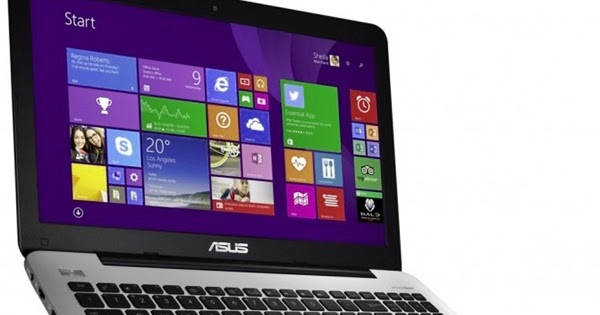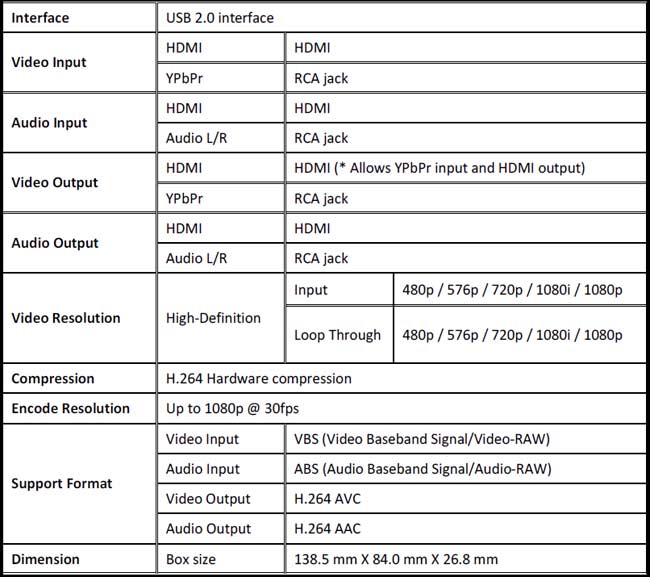- Mac Os Intel Wifi
- Intel Hd Driver For Mac Os 10.10
- Mac Os Intel Power Gadget
- Intel Hd Driver For Mac Os High Sierra
- Mac Os For Pc
Deploy OpenCL™ Runtimes
Obtain runtimes to execute or develop OpenCL™ applications on Intel® Processors
- Intel® Graphics Technology Runtimes
- Target Intel® GEN Compute Architectures on Intel® Processors only
- Intel® Xeon® Processor or Intel® Core™ Processor Runtimes
- Target Intel® x86/x86-64 only
Important Change

All graphics driver updates come from Apple in macOS software updates so you really shouldn't need to update them manually (the one exception is the Mac Pro which is the only Mac model to have user upgradeable graphics cards). I absolutely wouldn't recommend doing this unless you know what you're doing and confident in your. Now every new Mac ships with an Intel processor. Experience delightful responsiveness from the smallest Mac mini to the most beefed-up Mac Pro. Use one of more than 7,000 universal applications that take full advantage of the Intel chip. Run programs from your PowerPC-based Mac in translation. Download ioregistryexplorer Version 3. What kexts should be retained to Intel HD Graphics Click Finish and you will see OS X By johnverzJanuary 4 in OSx86 Intel HD worked oob! Intel® Graphics Drivers for Mac. Good luck and enjoy CECI. I attached my config.
There is a change in OpenCL™ CPU runtime for Windows* distribution in the 2020 February release to be consistent with Linux* distribution. The OpenCL CPU runtime is removed from the OpenCL driver for Windows starting in the 2020 February release version 'igfx_win10_100.7870.exe'.
- But the installer of the new driver did not remove the old OpenCL CPU runtime when you upgrade the newer driver, so you may have two OpenCL CPU runtimes on your system. This issue is already fixed in the installation script on github here.
- To download the OpenCL CPU runtime for Windows, please follow any of the following methods:
- Follow the section 'Intel® CPU Runtime for OpenCL™ Applications 18.1 for Windows* OS (64bit or 32bit)' below to download and install.
- Github: https://github.com/intel/llvm/releases
- Search for 'oneAPI DPC++ Compiler dependencies' and find latest release to download, e.g. https://github.com/intel/llvm/releases/tag/2020-WW20
- Following the installation instructions to install
Intel® Graphics Technology Runtimes
Execute OpenCL™ applications on Intel® Processors with Intel® Graphics Technology.
- Specifically target Intel® HD Graphics, Intel® Iris® Graphics, and Intel® Iris® Pro Graphics if available on Intel® Processors.
- Runtimes for Intel® Graphics Technology are often deployed in tandem with an Intel® CPU runtime.
- Consider graphics runtimes when developing OpenCL™ applications with the Intel® SDK for OpenCL™ Applications or Intel® System Studio.
Check release notes to ensure supported targets include your target device. For Intel® processors older than supported targets, please see the legacy deployment page.
Linux* OS
Repository Install Guidance *Easy* | Manual Download and Install | Build | README | FAQ
Intel® Graphics Compute Runtime for OpenCL™ Driver is deployed with package managers for multiple distributions. Please see the documentation on the GitHub* portal for deployment instructions.
Considerations for deployment:
- Ensure the deployment system has the (libOpenCL.so) ICD loader runtime from either:
- Your system package manager (for example with the unofficial ocl-icd )
- Useful package manager search hints:
- apt update; apt-file find libOpenCL.so
- yum provides '*/libOpenCL.so'
- Useful package manager search hints:
- Build from the official Khronos ICD Loader reference repository.
- Part of the Intel® SDK for OpenCL™ Applications.
- Your system package manager (for example with the unofficial ocl-icd )
- The Intel® Graphics Compute Runtime for OpenCL™ Driver depends on the i915 kernel driver. Necessary i915 features are available with relatively recent Linux* OS kernels. The recommended kernel is the validation kernel cited in documentation. In general, deployments after the 4.11 kernel should be OK. Make sure to review the release notes and documentation for more specifics.
Windows* OS
- Intel® Graphics Compute Runtime for OpenCL™ Driver is included with the Intel® Graphics Driver package for Windows* OS.
- Download Options
- System Vendor
- See your vendor website for a graphics or video driver download for the system
- Intel® Download Center
- Navigate to “Graphics Drivers” for recent releases.
- Try the system vendor first in consideration of vendor support. System vendors may disable Intel® Graphics Driver install.
- The graphics driver package is built in with Windows* 10 OS install. However, the built-in default deployment may not contain latest features.
- System Vendor
- Release Notes
- In the Download Center navigate to “Graphics Drivers” for Release Notes.
Intel® Xeon® Processor OR Intel® Core™ Processor (CPU) Runtimes
Execute OpenCL™ kernels directly on Intel® CPUs as OpenCL™ target devices.
- Consider an OpenCL™ CPU implementation for Intel® systems without Intel® Graphics Technology.
- Systems with Intel® Graphics Technology can simultaneously deploy runtimes for Intel® Graphics Technology and runtimes for Intel® CPU (x86-64).
- For application developers, the CPU-only runtime is pre-included with the Intel® SDK for OpenCL™ Applications or Intel® System Studio: OpenCL™ Tools component.
Check release notes to ensure supported targets include your target device. For Intel® processors older than supported targets, see the legacy deployment page.
Intel® CPU Runtime for OpenCL™ Applications 18.1 for Linux* OS (64bit only)
Download
- Size 125 MB
- See supported platform details in the Release Notes.
- Ubuntu* install uses an rpm translator
- The Linux* OS CPU runtime package also includes the ICD loader runtime (libOpenCL.so). The runtime installer should set the deployment system to see this ICD loader runtime by default. When examining system libraries, administrators may observe ICD loader runtimes obtained from other places. Examples include the system package manager (for example with ocl-icd) or as part of the Intel® SDK for OpenCL™ Applications.
- Maintenance and updates are now provided in the Experimental Intel® CPU Runtime for OpenCL™ Applications with SYCL support implementation. This implementation is listed later in this article.
- MD5 83c428ab9627268fc61f4d8219a0d670
- SHA1 5f2fa6e6bc400ca04219679f89ec289f17e94e5d
Intel® CPU Runtime for OpenCL™ Applications 18.1 for Windows* OS (64bit or 32bit)
- Size 60 MB
- CPU-only deployments should use the .msi installer linked in the Download button, and consider removal of the Intel® Graphics Technology drivers where applicable.
- CPU & Graphics deployments should use the Intel® Graphics Technology driver package, which contains both CPU (x86-64) and Intel® Graphics Technology implementations.
- See supported operating system details in the Release Notes
- Maintenance and updates are now provided in the Experimental Intel® CPU Runtime for OpenCL™ Applications with SYCL support implementation. This implementation is listed later in this article.
- MD5 8e24048001fb46ed6921d658dd71b8ff
- SHA1 451d96d37259cb111fe8832d5513c5562efa3e56

Experimental Intel® CPU Runtime for OpenCL™ Applications with SYCL support
Download from Intel staging area for llvm.org contribution: prerequisites.
Installation Guide on Github*
- This OpenCL™ implementation for Intel® CPUs is actively maintained. It is currently in *beta* as of article publication date.
- OpenCL 1.2, 2.0, and 2.1 programs can use this runtime.
- The DPC++/SYCL implementation can use this runtime. This runtime additionally supports the SYCL runtime stack. OpenCL™ developers are highly encouraged to explore Intel® DPC++ compiler and SYCL.
- Deployments with the Intel® CPU Runtime for OpenCL™ Applications 18.1 and this Experimental runtime are not jointly validated at article publication time. Use one or the other implementation, but not both.
- Feedback can be provided at the Intel® oneAPI Data Parallel C++ forum. Issues are also communicated at the Intel staging area for llvm.org contribution.
Develop OpenCL™ Applications
Tools to develop OpenCL™ applications for Intel® Processors
Intel® oneAPI: DPC++ Compiler
- DPC++/SYCL programs can run SYCL kernels by way of underlying OpenCL™ implementations.
- OpenCL-C kernels can also be directly ingested and run by a SYCL runtime. Users of the OpenCL C++ API wrapper may find the SYCL specification particularly appealing.
- Explore the Intel® oneAPI: DPC++ Compiler, Github* hosted DPC++/SYCL code samples, OpenCL™ injection tests, as well as training videos part1 and part2 on techdecoded.intel.io.
- As of article publication, this compiler is in Beta.

Intel® System Studio
- For compilation, cross-platform, IoT, power considerate development, and performance analysis.
- OpenCL™ development tools component:
- Develop OpenCL™ applications targeting Intel® Xeon® Processors, Intel® Core™ Processors, and/or Intel® Graphics Technology.
- Develop applications with expanded IDE functionality, debug, and analysis tools.
- Note: Some debug and analysis features have been removed from recent versions of the SDK.
- Earlier versions of the SDK contain an experimental OpenCL™ 2.1 implementation. Intel® CPU Runtime for OpenCL™ Applications 18.1 was intended as a replacement for the experimental implementation.
- OpenCL™ development tools component:
- Visit the Intel® System Studio portal
Intel® SDK for OpenCL™ Applications
- Standalone distribution of Intel® System Studio: OpenCL™ Tools component.
- Develop OpenCL™ Applications targeting Intel® Xeon® Processors, Intel® Core™ Processors, and/or Intel® Graphics Technology.
- Develop applications with expanded IDE functionality, debug, and analysis tools.
- Note: Some debug and analysis features have been removed from recent versions of the SDK.
- Earlier versions of the SDK contain an experimental OpenCL™ 2.1 implementation suitable for development testing on CPU OpenCL™ targets. Intel® CPU Runtime for OpenCL™ Applications 18.1 was intended as a replacement for that experimental implementation.
- See release notes, requirements, and download links through the Intel® SDK for OpenCL™ Applications portal.
Intel® FPGA SDK for OpenCL™ Software Technology
- Build OpenCL™ Applications and OpenCL™ kernels for Intel® FPGA devices.
- See release notes, requirements, and download links through the SDK’s portal webpage.
- For OpenCL™ runtimes and required system drivers, visit Download Center for FPGAs.
Intel® Distribution of OpenVINO™ toolkit
- The Intel® Distribution of OpenVINO™ toolkit is available for vision and deep learning inference. It benefits from OpenCL™ acceleration for each of these components:
- Intel® Deep Learning Deployment Toolkit
- OpenCV
- OpenVX*
- For a developer oriented overview, see videos on the techdecoded.intel.io training hub.
Intercept Layer for Debugging and Analyzing OpenCL™ Applications
- The Intercept Layer for Debugging and Analyzing OpenCL™ Applications (clIntercept) can intercept, report, and modify OpenCL™ API calls.
- No application-level modifications nor OpenCL™ implementation modifications are necessary.
- clIntercept functionality can supplement removed functionality from recent releases of the Intel® SDK for OpenCL™ Applications.
Additional resources
*OpenCL and the OpenCL logo are trademarks of Apple Inc. used by permission by Khronos.

Many 15-inch MacBook Pro notebooks have two graphics processors (GPU)—a discrete GPU and an integrated GPU. The discrete GPU provides substantial graphics performance but uses more energy. The integrated GPU optimizes battery life by using less energy.
Mac Os Intel Wifi
Check if the discrete or integrated GPU is in use
To see which graphics cards are in use, choose Apple () menu > About this Mac. The graphics cards currently in use appear next to Graphics. Learn which integrated GPUs your Mac might have.
Check if an app is using the dedicated GPU
To see if an app is using the higher-performance discrete GPU, open Activity Monitor and click the Energy tab. If you don't see the Requires High Perf GPU column, your computer only has one graphics processor.
In this example, iMovie and Final Cut Pro are using the higher-performance discrete GPU:
Learn more
Intel Hd Driver For Mac Os 10.10
Here are a few examples of apps and accessories that use the higher-performance discrete GPU:
Mac Os Intel Power Gadget
- iMovie
- Adobe Photoshop and Adobe InDesign
- An external display
Intel Hd Driver For Mac Os High Sierra
Learn how to use an external graphics processor (eGPU) with your Mac.
Mac Os For Pc
Learn how to set the graphics performance on your MacBook Pro or MacBook Pro with Retina display computer.
